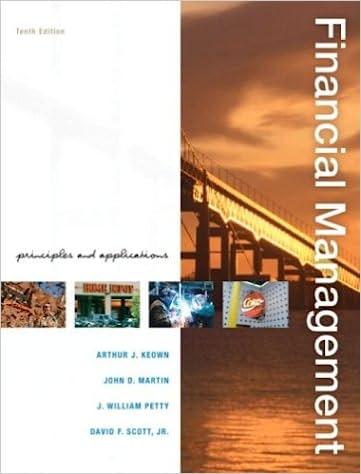There was a time when the made in Japan label brought a predictable smirk of superiority to
Question:
There was a time when the "made in Japan" label brought a predictable smirk of superiority to the face of most Americans. The quality of most Japanese products usually was as low as their price. In fact, few imports could match their domestic counterparts, the proud products of "Yankee know-how." But by the late 1960s, an invasion of foreign-made goods chiseled a few worry lines into the countenance of American industry. And in Detroit, worry was fast fading to panic as the Japanese, not to mention the Germans, began to gobble up more and more of the subcompact auto market. Never one to take a back seat to the competition, Ford Motor Company decided to meet the threat from abroad head-on. In 1968, Ford executives decided to produce the Pinto. Known inside the company as "Lee's car," after Ford president Lee Iacocca, the Pinto was to weigh no more than 2,000 pounds and cost no more than $2,000. Eager to have its subcompact ready for the 1971 model year, Ford decided to compress the normal drafting-board-to- showroom time of about three-and-a-half years into two. The compressed schedule meant that any design changes typically made before production-line tooling would have to be made during it. Before producing the Pinto, Ford crash-tested 11 of them, in part to learn if they met the National Highway Traffic Safety Administration (NHTSA) proposed safety standard that all autos be able to withstand a fixed-barrier impact of 20 miles per hour without fuel loss. Eight standard-design Pintos failed the tests. The three cars that passed the test all had some kind of gas-tank modification. One had a plastic baffle between the front of the tank and the differential housing; the second had a piece of steel between the tank and the rear bumper; and the third had a rubber-lined gas tank. Ford officials faced a tough decision. Should they go ahead with the standard design, thereby meeting the produc- tion time table but possibly jeopardizing consumer safety? Or should they delay production of the Pinto by redesigning the gas tank to make it safer and thus concede another year of sub- compact dominance to foreign companies? To determine whether to proceed with the original design of the Pinto fuel tank, Ford decided to use a capital-budgeting approach, examining the expected costs and the social benefits of making the change. Would the social benefits of a new tank design outweigh design costs, or would they not? To find the answer, Ford had to assign specific values to the variables involved. For some factors in the equation, this posed no problem. The costs of design improvement, for example, could be estimated at $11 per vehicle. But what about human life? Could a dollar-and-cents figure be assigned to a human being?
Questions 1. Do you think Ford approached this question properly?
2. What responsibilities to its customers do you think Ford had? Were their actions ethically appropriate?
3. Would it have made a moral or ethical difference if the $11 savings had been passed on to Ford's customers? Could a rational customer have chosen to save $11 and risk the more dangerous gas tank? Would that have been similar to making air bags optional? What if Ford had told potential customers about its decision?
4. Should Ford have been found guilty of criminal homicide in the Ulrich case?
5. If you, as a financial manager at Ford, found out about what had been done, what would you do?
Step by Step Answer:

Financial Management Principles And Applications
ISBN: 9780131450653
10th Edition
Authors: Arthur J. Keown, J. William Petty, John D. Martin, Jr. Scott, David F.





